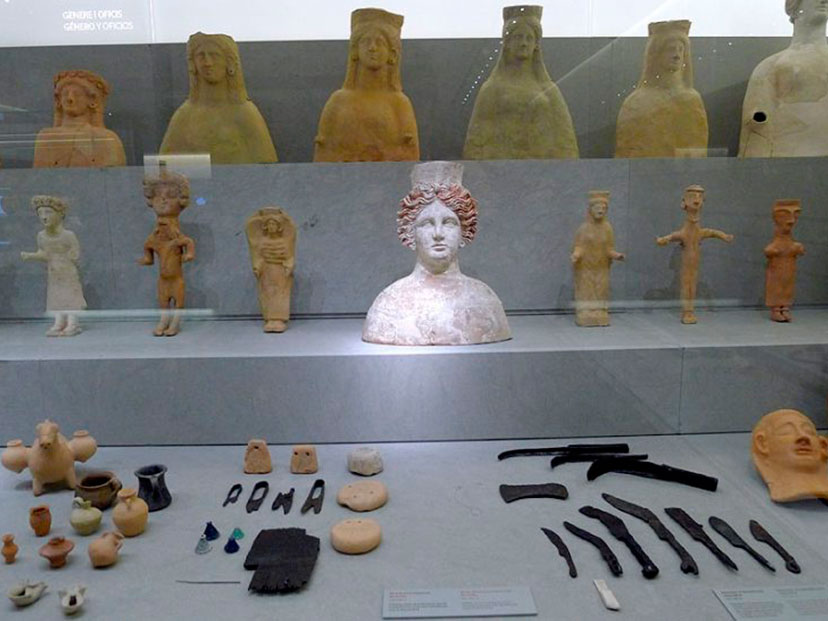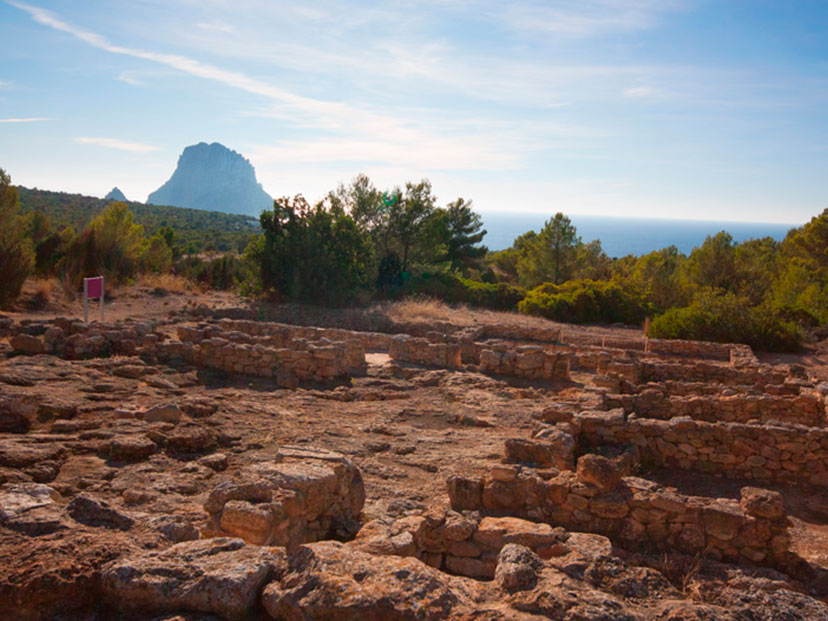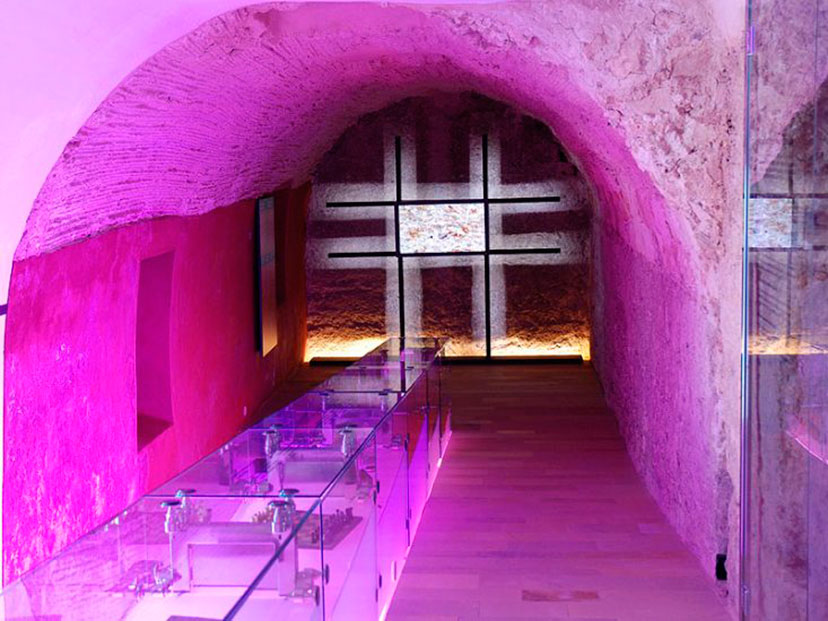If you are a lover of archaeology and history, Ibiza is the place to be, with dozens of sites all over the island, some of which have been awarded the distinction of World Heritage Sites by UNESCO, which this year celebrates its 20th anniversary.
One of the sites that have received this international distinction is the best known and most important: the Phoenician settlement of sa Caleta, dating from the 7th century BC. A project is underway to build an interpretation centre in this area to help visitors better understand the importance of this place, the first Phoenician settlement on the island.
Near the most prominent walls of the World Heritage Site is the Puig des Molins Necropolis, dating back to the 7th century BC. Located in the centre of the city of Ibiza, this site has 3,000 tombs carved out of the rock and also houses the Puig des Molins Archaeological Museum, from which you can visit a small part of this Punic cemetery and enter one of its ancient tombs.
A short distance away is the Sa Capelleta Interpretation Centre, where you can see what the neighbourhood adjacent to the Phoenician necropolis was like at different times in history: from the oldest Phoenician period, through the Roman period when it was used for burials, to the extramural Moorish suburb.
And inside the walls of the city of Ibiza, is the Madina Yabisa Interpretation Centre, where you can see other remains, in this case those of Ibiza’s ancient medieval wall. Apart from these remains, this interpretation centre offers the visitor the chance to learn everything about the Moorish era.
In the north of the island, in Sant Vicent de sa Cala, is the Cova des Culleram, an archaeological site lying 150 metres above sea level. Devoted to the goddess Tanit, the main Carthaginian deity, linked to fertility and fortune, among other things, this cave was also used as a home in prehistoric times, as evidenced by various Bronze Age remains found there. The Punic people, however, made it their most important place of worship on Ibiza between the 5th and 2nd centuries BC, and the faithful probably came here from all over the island to make offerings. The temple was very well-organised and had a body of priests who would come to it during periods when rituals were held.
In the town of Santa Eulària des Riu, there is a Roman aqueduct crossing part of the municipality and extending as far as the coast through the district of s’Argamassa, after which it is named. In the ancient Roman times of the first century it transported fresh water to a fish farm on the coast.
For those who are looking for more secluded sites, not far from the beach of Cala d’Hort, you can find Ses Païsses de Cala d’Hort, a Punic-Roman settlement, dating from the 5th century B.C., which features the remains of an ancient Roman villa and two small necropolises, while near the beach of Cala Salada you can visit Sa Cova del Vi or Ses Fontanelles, a cave with cave paintings that was used as a wine cellar.
During the almond blossom period, a visit to Sa Penya Esbarrada is a must. This is a small 12th century site containing the remains of an old Moorish country house located in the Pla de Corona, very close to the viewpoint of the Ses Margalides islands, also called the ‘Gates of Heaven’.
The future Parador of Ibiza, meanwhile, boasts the remains of a Roman temple built between the 1st century BC and 2nd century AD, which will be revealed once the work is completed.



